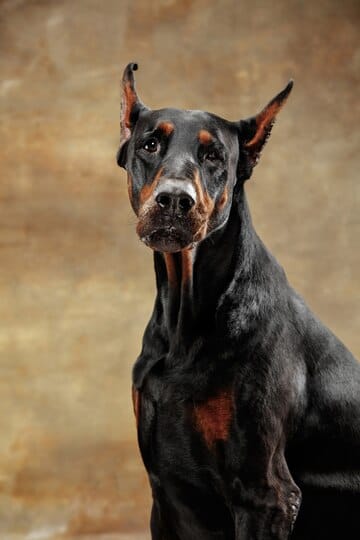- The Basics: What is Purring? 🐾
- Can Dogs Really Purr? The Truth Unveiled 🕵️♂️
- Why Does My Dog “Purr” When I Cuddle Him? 🤗
- Dog Breeds That “Purr”: Myth or Reality? 🐕
- The Science Behind Dog Vocalizations 🧪
- When and How Do Dogs Make Purr-Like Sounds? 🕰️
- Pros and Cons of Dog “Purring” ✅❌
- Environmental Factors Affecting Dog Vocalizations 🏠
- What’s Normal, What’s Not: Understanding Your Dog’s Sounds 📊
- Facts and Figures: Dog Vocalizations by the Numbers 📈
- Best and Worst Dog Breeds for Vocalization 🏆🚫
- Poodle Varieties and Their Vocalizations 🐩
- Solutions for Excessive Dog Vocalizations 🛠️
- FAQs About Dog “Purring” and Vocalizations ❓
- Conclusion: Embracing Your Dog’s Unique Voice 🎭
Ever caught your furry friend making a sound that reminds you of a cat’s purr? You’re not alone! Many dog owners have wondered, “Can dogs purr like cats?” Let’s dive into this fascinating topic and explore the world of canine vocalizations, focusing on the phenomenon some call “dog purring.”
The Basics: What is Purring? 🐾
Before we tackle the question of whether dogs can purr, let’s break down what purring actually is:
Purring is a unique vocalization most commonly associated with cats. It’s a low-frequency, rhythmic sound produced by rapid vibrations of the vocal cords. Cats purr during both inhalation and exhalation, creating that continuous rumble we all know and love.
But here’s the kicker: true purring, as defined by feline experts, is something only cats can do. So when we talk about dogs “purring,” we’re really discussing a similar sound that dogs make – not actual purring in the feline sense.
Can Dogs Really Purr? The Truth Unveiled 🕵️♂️
Let’s cut to the chase: Dogs don’t purr in the same way cats do. Their vocal anatomy is different, and they lack the specialized apparatus that allows cats to produce that distinctive purr.

However, dogs can make sounds that some owners describe as “purring.” These sounds are often a combination of:
- Soft grunting
- Low grumbling
- Quiet rumbling
These vocalizations might sound similar to a purr, but they’re produced differently and serve different purposes in canine communication.
Why Does My Dog “Purr” When I Cuddle Him? 🤗
If your dog makes a purr-like sound when you’re cuddling, it’s likely a sign of contentment. Here are some reasons why your pup might make these happy noises:
- Comfort and relaxation
- Expressing pleasure
- Seeking attention
- Communicating contentment
- Showing affection
It’s important to note that each dog is unique, and their vocalizations can mean different things depending on the context and individual personality.
Dog Breeds That “Purr”: Myth or Reality? 🐕
While no dog breed truly purrs, some are more vocal and prone to making purr-like sounds. Let’s explore some breeds known for their interesting vocalizations:
- Basenji: Known as the “barkless dog,” Basenjis make a unique yodel-like sound called a “baroo.”
- Alaskan Malamute: These fluffy giants are known for their “woo-woo” vocalizations, which can sound purr-like.
- Siberian Husky: Huskies are famous for their “talking,” which can include a range of vocalizations.
- Bulldog: Bulldogs often make grunting and snorting sounds that some owners describe as purr-like.
- Shiba Inu: These fox-like dogs are known for their range of vocalizations, including a sound called the “Shiba scream.”
Remember, while these breeds might be more prone to making interesting sounds, any dog can potentially make a purr-like noise if they’re content and relaxed.
The Science Behind Dog Vocalizations 🧪
To understand why dogs can’t purr like cats, let’s dive into some canine anatomy:
- Vocal cords: Dogs have vocal cords, but they’re structured differently from cats’.
- Larynx: The dog’s larynx isn’t designed to produce the rapid vibrations necessary for purring.
- Breathing patterns: Dogs can’t maintain the continuous breath control required for true purring.
Instead of purring, dogs have a wide range of vocalizations to express themselves:
- Barking
- Whining
- Growling
- Howling
- Yipping
- Grumbling
Each of these sounds serves a different purpose in canine communication, from alerting to danger to expressing excitement or discomfort.
When and How Do Dogs Make Purr-Like Sounds? 🕰️
Dogs might make purr-like sounds in various situations:
- During cuddles: As mentioned earlier, many dogs vocalize contentment when being petted or cuddled.
- While relaxing: Some dogs make soft grumbling noises when they’re settling down for a nap.
- When seeking attention: A dog might make a low rumbling sound to get their owner’s attention.
- After eating: Some dogs express satisfaction after a meal with a soft grumble.
- During play: Playful dogs might make various vocalizations, including purr-like sounds.
Pros and Cons of Dog “Purring” ✅❌
Let’s weigh the pros and cons of this canine behavior:
Pros:
- Indicates contentment and happiness
- Strengthens the bond between dog and owner
- Can be a sign of good health and well-being
- Adds to the dog’s unique personality
Cons:
- Might be confused with other vocalizations (like growling)
- Could potentially mask health issues if not properly understood
- Might encourage attention-seeking behavior if rewarded consistently
Environmental Factors Affecting Dog Vocalizations 🏠
A dog’s environment can significantly impact their vocalizations, including purr-like sounds:
- Stress levels: A stressed dog is less likely to make contented vocalizations.
- Noise pollution: Dogs in noisy environments might vocalize more or less, depending on their personality.
- Living space: Dogs in smaller spaces might be more vocal to express their needs.
- Presence of other pets: Multi-pet households might influence a dog’s vocalizations.
- Owner’s behavior: Dogs often mirror their owner’s energy levels and mood.
What’s Normal, What’s Not: Understanding Your Dog’s Sounds 📊
While purr-like sounds are generally normal, it’s crucial to distinguish between happy vocalizations and potential signs of distress. Here’s a quick guide:
| Normal Sounds | Potential Concern |
|---|---|
| Soft grumbling | Persistent whining |
| Contented sighs | Excessive barking |
| Quiet rumbling | Yelping or crying |
| Low “woo-woo” sounds | Constant growling |
If you’re ever unsure about your dog’s vocalizations, consult with a veterinarian or professional dog behaviorist.
Facts and Figures: Dog Vocalizations by the Numbers 📈
Let’s look at some interesting statistics related to dog vocalizations:
- Dogs can make about 10 distinct vocalizations, compared to cats’ 16.
- The average dog bark is between 60-110 decibels.
- Basenjis, known for their unique vocalizations, originated in central Africa over 6,000 years ago.
- A dog’s hearing is about four times more sensitive than a human’s.
- The world’s loudest bark recorded was 113.1 decibels, produced by a Golden Retriever named Charlie.
Best and Worst Dog Breeds for Vocalization 🏆🚫
While all dogs are individuals, some breeds are generally more vocal than others. Here’s a quick rundown:
Most Vocal Breeds:
- Beagle
- Siberian Husky
- Yorkshire Terrier
- Chihuahua
- Alaskan Malamute
Least Vocal Breeds:
- Basenji (despite their unique vocalizations)
- Greyhound
- Bernese Mountain Dog
- Whippet
- Great Dane
Remember, proper training and socialization can significantly influence a dog’s vocalization habits, regardless of breed.
Poodle Varieties and Their Vocalizations 🐩
Poodles, known for their intelligence and versatility, come in different sizes. Let’s explore how their vocalizations might vary:
| Poodle Variety | Typical Vocalizations |
|---|---|
| Standard Poodle | Moderate barking, occasional grumbling |
| Miniature Poodle | More frequent barking, higher-pitched sounds |
| Toy Poodle | Most vocal, prone to yapping |
Age can also play a role in a Poodle’s vocalization habits:
- Puppies: More vocal, experimenting with different sounds
- Adults: Generally more controlled vocalizations
- Seniors: Might become more vocal due to age-related issues
Solutions for Excessive Dog Vocalizations 🛠️
If your dog’s vocalizations are becoming a problem, try these solutions:
- Positive reinforcement training: Reward quiet behavior and ignore excessive vocalization.
- Mental stimulation: Provide puzzle toys and regular exercise to keep your dog engaged.
- Desensitization: Gradually expose your dog to triggers that cause vocalization.
- Professional help: Consult a dog behaviorist for personalized advice.
- Health check: Rule out any medical issues that might be causing discomfort or excessive vocalization.
FAQs About Dog “Purring” and Vocalizations ❓
- Q: Can all dogs make purr-like sounds?
A: While all dogs can potentially make various vocalizations, not all will produce sounds that resemble purring. - Q: Is my dog unhappy if they don’t “purr”?
A: Not at all! Dogs express contentment in many ways, including tail wagging, relaxed body language, and seeking affection. - Q: Can I train my dog to “purr”?
A: It’s not recommended to try to train this behavior, as it could lead to confusion or reinforce attention-seeking vocalizations. - Q: Should I be concerned if my usually quiet dog starts “purring”?
A: Any sudden change in behavior warrants attention. Consult with your vet to rule out any health issues. - Q: Do wild canines make purr-like sounds?
A: Some wild canines, like wolves, make low grumbling sounds when greeting pack members, which might be similar to what we perceive as dog “purring.”
Conclusion: Embracing Your Dog’s Unique Voice 🎭
While dogs may not purr like cats, their vocalizations are a rich and varied form of communication. From the Basenji’s yodel to the Husky’s “woo-woo,” each breed and individual dog has its own unique way of expressing itself.
Understanding your dog’s vocalizations is key to strengthening your bond and ensuring their well-being. Whether your furry friend is a chatty Chihuahua or a quiet Great Dane, celebrate their unique voice and the joy it brings to your life.
Remember, the next time you hear your dog make a purr-like sound during a cuddle session, it’s their special way of saying, “I’m happy, and I love you!” 🐾❤️































